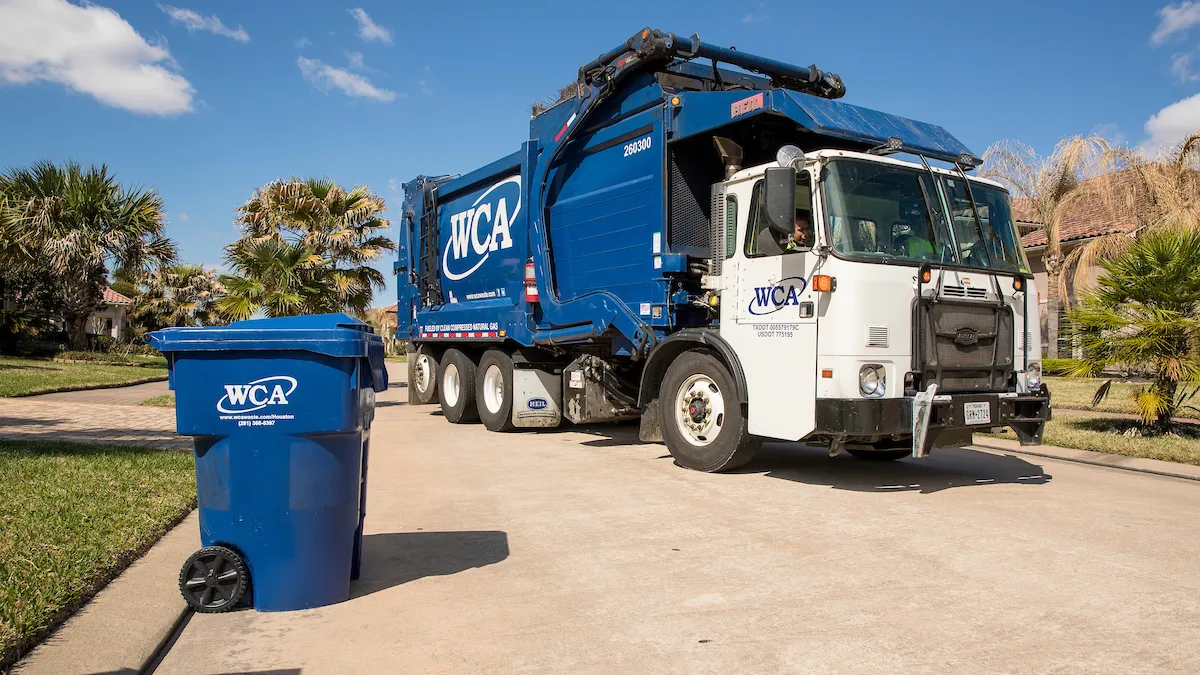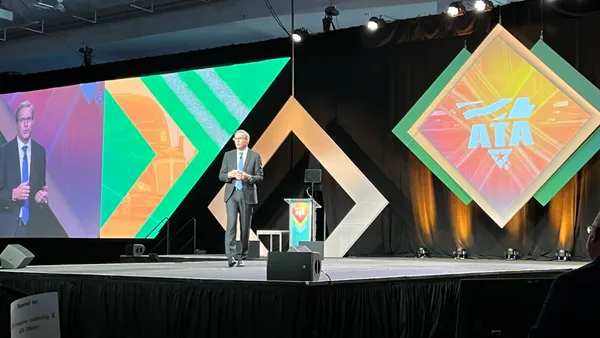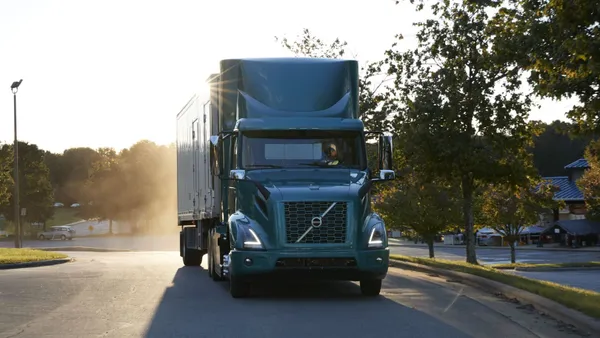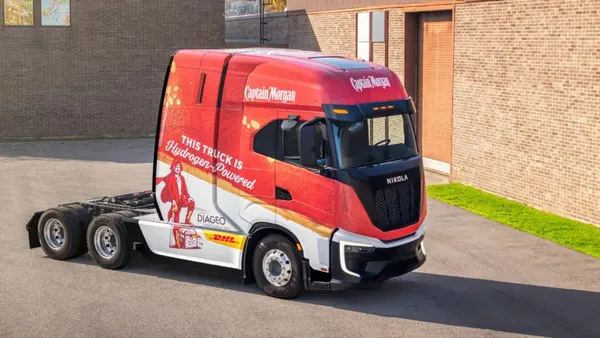Dive Brief:
- Texas-based WCA Waste set new 2030 sustainability goals that include plans to reduce greenhouse gas emissions (GHG) 35% by shifting more of its fleet to compressed natural gas (CNG).
- WCA's fleet, which comprises 1,000 trucks, is currently 16% CNG vehicles. The company expects it could increase that to at least 50%. CEO Bill Caesar told Transport Dive sister publication Waste Dive he sees opportunities for new or expanded fueling infrastructure in Houston; Kansas City, Missouri; and parts of Florida.
- Environmental, social and governance, known as ESG, is still seen as an evolving area for the sector. WCA's move comes as some other large players have not set specific targets or pledged to publish carbon accounting data. WCA describes itself as the eighth largest non-hazardous solid waste collection and disposal company in North America, reporting $400 million in annual revenue in this latest report.
Dive Insight:
WCA reported partial or full progress toward multiple goals set in its report last year around route optimization, recycling quality, employee relations and community engagement.
"[The initial report] wasn’t driven by a desire to simply reduce carbon footprint; it was really a dual goal. It was, what are the things that we can do as a company that will allow us to support the environment, and at the same time either reduce our costs or do something that helps us improve our customer service in some way?" said Caesar. "I don’t think it’s that hard to get to both of those things."
In addition to its environmental goals, the company is also working to reach a 20% voluntary turnover rate (as compared to 31% in 2018 and 27.76% in 2019). Driver turnover rates in the trucking sector jumped early in the first quarter of 2020 before they fell in March to "all-time lows," according to research by Stay Metrics. But Stay Metrics Co-Founder and CEO Tim Hindes said fleets should not ease up on retention efforts. Instead, "now is the time to double down," he said.
For this second report, which Caesar personally wrote much of, WCA informed its strategy by focusing on four key United Nations Sustainable Development Goals (SDGs) and chose to set a smaller list of new goals over a longer timeframe so "we can factor that into our investment assessments and our capital expenditure planning." Like other vertically-integrated operators in the industry, WCA sees its fleet and landfills as among the largest sources of GHG emissions.
WCA's share of CNG vehicles was once more than 20%, but that dropped slightly following acquisitions in recent years because "the chances that a smaller company is using CNG trucks is pretty small," Caesar said.
Scientists and environmental groups have expressed skepticism about the climate benefits of CNG, a point Caesar recognized, although many agree it is preferable to diesel emissions. Caesar said he does not anticipate alternatives, such as electric vehicles (EVs), will be viable at scale near term. The prospects for short-haul EVs has garnered enthusiasm, particularly at California ports, because those EVs will not travel long distances. Long-range use of EVs is much more theoretical.
At the same time, WCA does see opportunities to increase its relatively limited presence in recycling as population growth continues in certain markets. The company could increase throughput by 30% to 40% at its Kansas City MRF (which will soon have new automated systems installed by AMP Robotics) and upward of 50% at its Houston MRF as demand grows, Caesar said.















